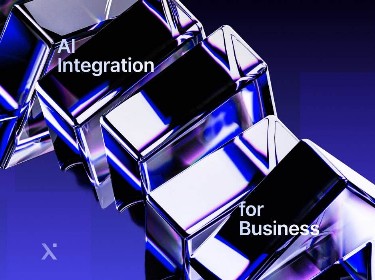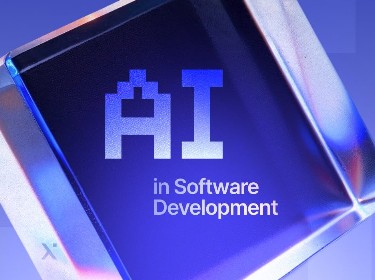Artificial intelligence (AI) plays a pivotal role in cybersecurity, bringing smarter and faster threat detection to the forefront. By leveraging AI, we can now predict and neutralize cyber attacks with precision, greatly enhancing our digital defense capabilities.
According to MarketsandMarkets research, the artificial intelligence in the cybersecurity market is experiencing rapid growth. Valued at $22.4 billion in 2023, it is projected to reach $60.6 billion by 2028. This substantial growth reflects the increasing reliance on AI technologies in the cybersecurity sector.
This article will take you through the challenges faced by the cybersecurity industry today, the importance of using AI in combating them, and also some of the limitations of pairing AI with cybersecurity. Finally, we will explore some real-world examples of AI in this field.
An overview of the cybersecurity industry
Cybersecurity refers to the measures used by individuals or companies to protect their hardware and software systems, connected to the internet, from cyberattacks.
The main factors driving the cybersecurity market are the increasing frequency and complexity of cyberattacks, the emergence of disruptive digital technologies such as generative AI, strict data protection rules for information security, and a spike in the number of attacks that exploit software supply chains.
Here are some interesting statistics from the cybersecurity domain:
- The capital invested in internal cybersecurity functions is predicted to grow by 7.2% per year until 2026.
- According to Cybersecurity Ventures, the cost of damages resulting from cybercrime is expected to soar to $10.5 trillion by 2025.
- The market size for artificial intelligence in cybersecurity, valued at $19.34B in 2022, is forecasted to expand to about $46.76B by 2032.
- According to the Deloitte Center for Controllership, in the past 12 months, 34.5% of the executives surveyed said that their business data were targeted by cybercriminals.
- The global expenditure on cybersecurity services and products is predicted to grow by 8.4%, by Dec 2026.
What are the most common cybersecurity challenges and how does AI address them?
![]()
The most pressing challenges for the cybersecurity industry include extensive data volume, slower turnaround time, limited knowledge of threats, organizational compliance standards, and human error. Let’s take a closer look at each challenge.
1. Extensive data volume
Data volumes continue to increase every year — every day, in fact! It is difficult to find security threats amidst this huge store of data. Most of the time, a human employee cannot analyze the network or hardware/software resources for its holistic data storage health and hence cannot spot any unusual activity that might signal a potential attack or vulnerability.
AI is like a powerhouse when it comes to handling huge amounts of data. It can quickly sift through all that information, spotting any unusual patterns or signs of security threats – something that would take humans ages to do. Additionally, AI’s machine learning capabilities allow it to adapt and improve over time, continuously enhancing its ability to manage and secure vast amounts of data.
2. Slower turnaround time
On detecting an anomaly in the network, a considerable period of time has to be invested in re-programming the system to stop the cyber-criminal. This delays the response to the ongoing threat, even as the sensitive information gets more and more compromised.
AI can significantly reduce slower turnaround times by automating and streamlining processes, allowing for quicker decision-making and action. Its ability to analyze data rapidly and provide insights in real-time leads to faster responses to various threats.
3. Limited knowledge of threats
There is limited knowledge of global and industry-specific threats, meaning that security personnel falls short in making critical prioritization decisions based on the most commonly used attacks against a business.
AI continuously learns from new data, thereby expanding its understanding of potential security risks. It can detect and analyze emerging threats that humans might not yet recognize, broadening the scope of cybersecurity awareness and preparedness.
4. Organizational compliance standards
In any organization, there are various organizational compliance standards to be adhered to. Among the factors that compromise security and challenge cybersecurity protocols are the lack of competent cyber security audit experts, strategic and proactive security planning, and the absence of secure endpoint and device management.
AI aids in meeting organizational compliance standards by automating the monitoring and reporting processes, ensuring regulations are consistently adhered to. It can also adapt to changes in compliance requirements, helping organizations stay up-to-date and avoid potential non-compliance issues.
5. Human error
Did you know that 95% of cybersecurity breaches are caused by human error? These errors may range from downloading an email attachment infected with viruses to using a weak password for accessing an insecure website.
Studies have found that along with ransomware attacks, stolen laptops, and CEO fraud, phishing attacks are the most common cyber incidents recorded. While these attacks may seem like straightforward things to be dealt with, their after-effects are astounding. According to an IBM report, the global average cost of a data breach in 2023 reached $4.45 million, marking a 15% rise over the past three years.
AI can significantly reduce the risk of human error in cybersecurity by automating complex tasks and decision-making processes, ensuring consistent and error-free workflows.
Explore current cybersecurity threats that businesses should be aware of
Delving into common cybersecurity attacks
Here are some of the most common cybersecurity attacks that are ingeniously crafted by hackers — we all need to be aware of them:
1. Phishing
Phishing is a social engineering technique where a hacker sends you an email with a malicious link. Clicking on the link can provide them access to your system to plant a bug and retrieve all of your personal information.
2. Software and hardware attacks
If software and hardware are not upgraded to their latest versions, the chances are that your system is missing important security patches that can be exploited to plant “back doors” or “trojans” and gain entry into the system.
3. Network attacks
Malicious actors can intercept and decrypt data flowing to and from an endpoint on the network. They can tamper with it, modify it, or use it for unlawful purposes if not detected in time.
4. Cloud data hacks
With private and public cloud adoption on the rise, data stored on the cloud without any encryption is an open invitation for misuse by exploitative hackers. Insecure interfaces or APIs, poor access management, and improper security architecture are other reasons why data stored in the cloud can be compromised.
5. Mobile malware
This harmful software can disrupt the working of the internal operating systems of mobiles, impacting their performance. Often, this happens due to the non-secure usage of URLs over the internet. Downloading applications that have vulnerabilities also contributes to mobile malware issues.
6. Exploiting IoT devices
Since IoT devices can be connected to almost every household appliance, they are an easy target for hackers who can easily disable home security systems or even access personal data.
7. Ransomware attacks
Ransomware represents one of the most popular forms of a cyberattack: the attackers initiate a virus that gains access to personal laptops and mobiles to exploit personal data. They follow this up with a ransom demand for releasing its access back to you.
8. Blockchain attacks
When trading or using crypto, you will encounter one or two hazards associated with blockchain technology. This is why trading strategies need to incorporate appropriate security control to avoid loss of crypto assets on the network and to maintain transparency of cryptocurrencies usage within the network while keeping other DDoS attacks at bay.
Explore the most common cybersecurity trends that you should keep an eye on in 2024
How can artificial intelligence improve cybersecurity?
![]()
Let’s take a look at some core areas where AI can prove to be of utmost importance:
Manoeuvring huge amounts of data
Over 2.5 quintillion bytes of data are generated every day. AI solutions can help automate the processing of data and make sense of large amounts of information that would be impossible for humans to interpret in a useful way.
Since organizations face millions of threats, it is impossible for security researchers to analyze and categorize every piece of data. For security experts, predicting threats before they grind down IT systems is an enormous challenge. Artificial intelligence can detect many cyber-security threats and problems without the need for human analysts.
Behavioral analytics
ML algorithms are capable of learning and designing a pattern of the user behavior by performing an analysis of how they normally use their devices.
If an AI algorithm spots some unusual activities that are uncharacteristic of the user’s normal behavior, it marks them as suspicious and may even block the user. Those activities comprise a change in the user’s typing speed or attempts to access the system in unusual hours, etc.
Data analysis and interpretation capabilities
AI and ML have become critical information security technologies, because they are capable of analyzing millions of events and identifying many different types of threats, from malware exploiting zero-day vulnerabilities to phishing attacks and malicious code downloads. These insights help companies understand threats and shorten response times, aligning them more consistently with the best security practices.
Check out our ML consulting services and let’s see how we can assist you in your next project
Spam detection
Natural language processing (or NLP for short), which is a branch of deep learning, can help with the detection of spam as well as other forms of social engineering.
Generally, NLP thoroughly learns common forms of language and communication patterns and resorts to different statistical methods to spot and block spam content.
Intrusion detection and prevention systems (ID/IP)
These types of systems can identify malicious network activities, prevent intruders from gaining access to the systems, and notify the users about the potential threats. Both ID and IP systems tend to be helpful in dealing with data breaches, thereby providing better security of the user information.
What’s more, by applying deep learning, convolutional neural networks, and recurrent neural networks, it’s possible to ensure a more efficient functioning of ID/IP systems. The aforementioned techniques will help analyze the traffic more accurately, reduce the number of false alerts, and crucially allow security teams to easily differentiate between safe and unsafe network activities.
Quick identification of varied types of threats
Cybercriminals are getting faster and more sophisticated when it comes to hacking systems. Advanced technology such as machine learning helps to identify cyberattacks more quickly. It is impossible for humans to monitor all connected systems for all the different kinds of threats that may occur. AI-powered devices can be trained with this data and are capable of learning from both real-world and cyber-world data.
Increased employee productivity
By enabling AI in cybersecurity applications to perform security diagnoses, security personnel can verify legitimate threats and diagnose applications. This leaves cyber defenders with more time to focus on other issues that might require immediate attention while enabling companies to use their time and resources more effectively.
Forward-looking, artificial intelligence-driven, modern, responsive cybersecurity platforms outperform previous generations of solutions in several key areas. Organizations are beginning to invest in building AI systems that can analyze large volumes of data including malicious code, malware, and code anomalies to help cybersecurity teams identify potential threats.
Check out this artificial intelligence retina analyzer which solves the problems in retina pathologies diagnosis
Limitations of using artificial intelligence in cybersecurity
![]()
While AI can do a lot to keep hackers at bay, it can also be misused and pose a risk for any organization. Here are some obstacles confronting the use of AI in cybersecurity:
Advanced cyberattack tools
As a dual-use, all-purpose technology, AI can be a blessing and a curse for cybersecurity. While AI technologies can be used to identify and stop cyberattacks, similar AI systems can also be used by cybercriminals to launch their own complex attacks. Mindful of the risk of hacking campaigns and malware attacks, cybersecurity experts are investigating how AI might be used for counterattacks.
Upgrade of the existing malware
Another problem is that hackers can use AI to test and improve their existing malware to make it more resistant to AI-based security tools. These malicious actors can leverage AI tools to create new attack strategies that can damage traditional security systems.
Time and resource intensiveness
To build an AI system, you need to invest time, capital, and resources (computing power, memory, data). In order to train an AI engine to detect threats, the security team must research many data sets to provide relevant and sufficient data. consequently, it turns out to be a time-consuming process which will require due diligence and patience from your side.
Data exposure
For an AI-led cybersecurity system to be effective, it needs access to data — and that may include sensitive internal documents and other customer information. This is solely required for the purpose of building different use cases to protect the data against cyberattacks. However, it’s also risky if the AI system has even a single vulnerability that can be tapped into.
Problems with neural fuzzing
Neural fuzzing is intended for testing huge amounts of random input data within particular software to spot its vulnerabilities. It manages to do it thanks to the AI functionality.
Yet, fuzzing has a substantial disadvantage: hackers might find out about the weaknesses of a target system by collecting the data via neural networks.
Explore the most prominent web3 hacks, including prevention tips
Examples of artificial intelligence in cybersecurity
Using AI in cybersecurity enables IT teams to identify more than just threats or vulnerabilities in an effective and practical way, as we will see below.
The Capgemini Research Institute examined the role of cybersecurity and pointed out that building cybersecurity systems with AI is essential for businesses. Some respondents (850 leaders in cybersecurity, IT information security, and IT operations from 10 countries) believed that AI-enabled systems are the urgent need of the hour.
Here are some examples of AI-led cybersecurity systems:
1. FortiWeb
This artificial intelligence-based firewall for web applications uses machine learning and artificial neural networks to detect threats. Machine learning is a perfect application for cybersecurity because it begins with a baseline of the normal device, network, and application behavior, and uses to detect and determine abnormal behaviors.
![]()
2. DarkTrace
DarkTrace’s cybersecurity software uses machine learning that captures raw network traffic data to understand the correct or normal behavior of users and devices within the organization. Drawing on other training data sets and cybersecurity software experts, they use ML to analyze network traffic information to understand the basic behavior of the user and the devices so that the company can learn to recognize vital deviations from the normal behavior of the user and alert the breakthrough AI vendors to cyber threats.
3. Vectra AI Platform
Vectra AI platform is one of the leading solutions in AI-driven cybersecurity. One of its core features, Attack Signal Intelligence, offers real-time analysis to quickly identify where a system may be compromised.
Additionally, Vectra AI emphasizes AI-Driven Automation, which alleviates the burden of manual tasks in everyday cybersecurity operations. This automation extends to the prioritization of incidents, where it automatically correlates, scores, and ranks them based on urgency across network, identity, cloud, and SaaS environments.
4. Versive
Versive is an AI-based cybersecurity software that uses dissonance detection to track security threats, helping banks and financial institutions to identify adversaries and manage cybersecurity threats. Recently acquired by Esentire, Versive offers software called VSE (Versive Security Engine) which helps banks and other financial institutions analyze large amounts of transaction and cybersecurity data with machine learning.
Versive/Esentire’s customer list comprises IRIS Software Group, Global Investment Firm, and Global Architecture Firm among others.
5. IBM’s Watson
IBM has integrated its AI-powered Watson platform into cybersecurity solutions. Watson for Cyber Security utilizes cognitive computing to process vast amounts of unstructured data, such as research papers and blogs, to identify potential threats and assist in incident response, enhancing the capabilities of security analysts.
The future of AI in cybersecurity
Given the growing popularity of AI in cybersecurity, it’s safe to say that in the future we will see even more advanced solutions capable of solving even more complex and challenging industry’s issues. Artificial intelligence will continue acting as the savior for cybersecurity and help keep the digital space secure by automating threat detection.
To get closer to the AI cybersecurity future, it’s better to embrace the technology now and stay ahead of the curve. Yet, it’s true to admit that implementing AI can be a complex and daunting task that requires the due expertise and top skills.
Fortunately, PixelPlex’s team of professional AI developers is here to help you.
We have been delivering top-notch NLP, deep learning, computer vision, and machine learning solutions that helped our clients trigger exponential KPI growth across their enterprises and stay one step ahead of their competitors.
Contact us any time and we will be happy to introduce you to new and exciting opportunities.




